Bringing the outdoors inside isn’t just about adding a touch of nature to your living space; it’s about creating a thriving indoor ecosystem that works year-round. You’ll discover that successful plant decor requires more than randomly placing greenery around your home. Whether you’re dealing with low-light corners or sun-drenched windowsills, these nine strategic tips will transform your indoor spaces into a well-organized, visually stunning botanical sanctuary. Let’s explore how to make your plant collection both beautiful and practical.
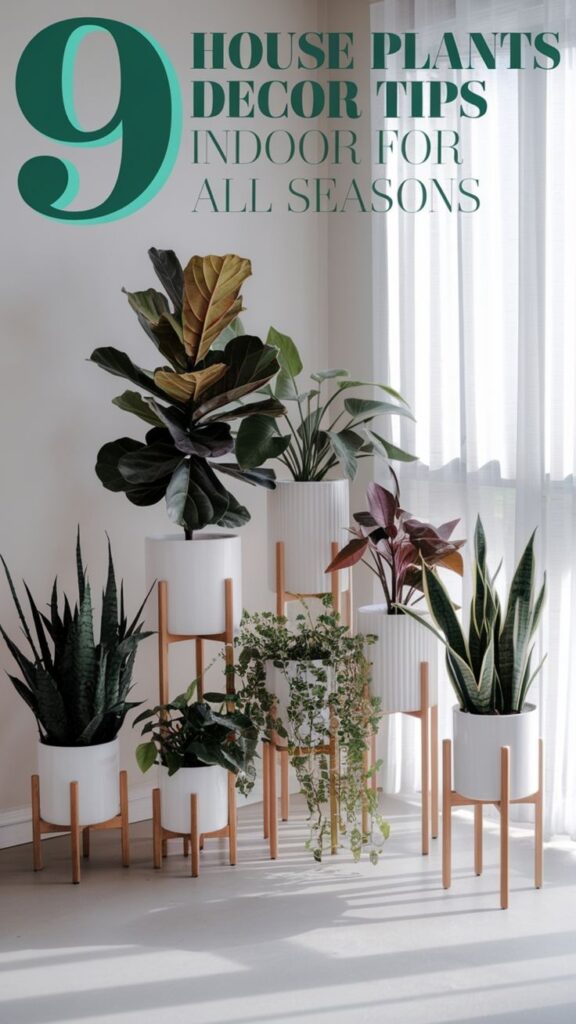
Contents
- 1 Choose Plants Based on Natural Light Conditions
- 2 Create Multi-Level Plant Displays
- 3 Mix and Match Container Styles
- 4 Group Plants by Watering Needs
- 5 Incorporate Plants Into Functional Spaces
- 6 Balance Plant Sizes and Textures
- 7 Rotate Seasonal Plant Arrangements
- 8 Design Plant-Friendly Temperature Zones
- 9 Establish Plant Care Stations
Choose Plants Based on Natural Light Conditions
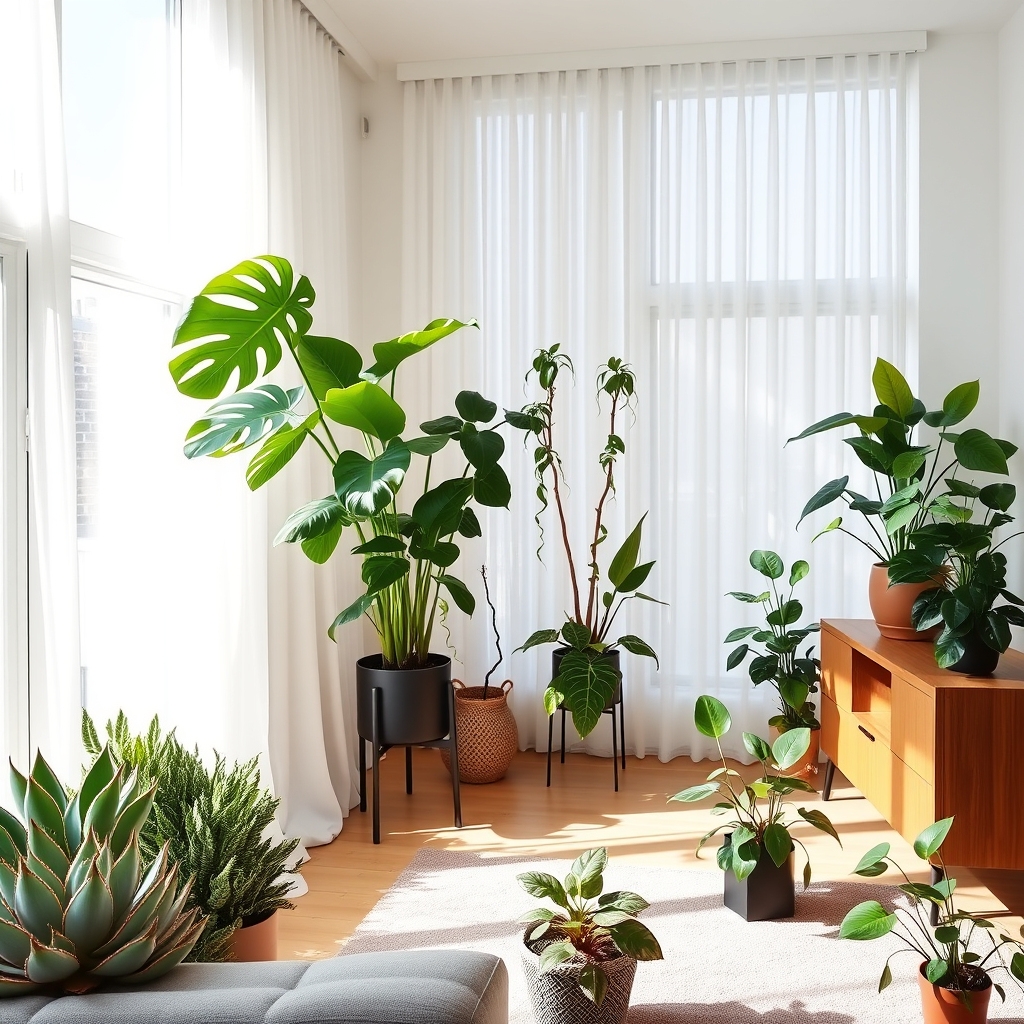
Choosing plants based on natural light conditions is essential for indoor plant success. Different areas of a home receive varying levels of light exposure:
Bright Direct Light:
- South or west-facing windows
- Plants like succulents, cacti, croton, and fiddle leaf fig thrive here
- 6+ hours of direct sunlight daily
Bright Indirect Light:
- Near windows with filtered light or slightly away from direct sun
- Suitable for monstera, pothos, philodendrons, and peace lilies
- 4-6 hours of filtered light daily
Medium Light:
- Few feet from windows or east-facing exposure
- Perfect for snake plants, ZZ plants, and Chinese evergreen
- 2-4 hours of gentle light daily
Low Light:
- North-facing windows or interior spaces
- Plants like cast iron plant, spider plant, and heart leaf philodendron adapt well
- Minimal natural light exposure
Matching plants to appropriate light conditions prevents leaf burn, stunted growth, and plant death while promoting healthy development and vibrant foliage.
Create Multi-Level Plant Displays

Multi-level plant displays create visual interest by arranging houseplants at different heights using various platforms, stands, and hanging methods.
This dynamic setup typically combines floor plants, tabletop specimens, wall-mounted planters, and hanging baskets to maximize vertical space and create depth.
Plants can be staged on tiered shelving units, stacked plant stands, windowsills at varying levels, or using platforms of different heights like stools, boxes, or dedicated plant risers.
The arrangement forms an eye-catching “living wall” effect that draws attention upward and makes efficient use of limited space while allowing each plant to receive appropriate light exposure based on its specific needs.
Mix and Match Container Styles
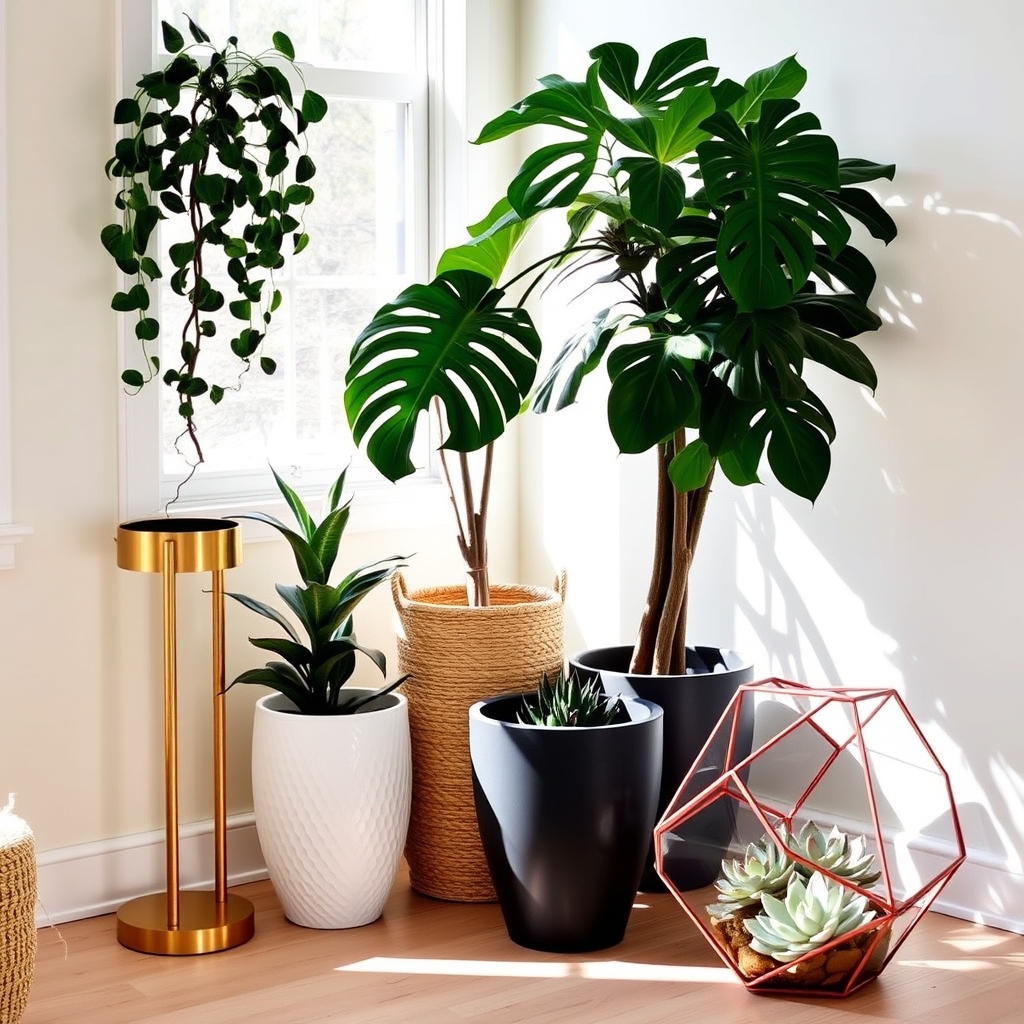
Mix and match container styles creates visual interest by combining different planter designs, materials, textures, and sizes within the same space.
This decorative approach pairs diverse vessels like ceramic pots, metallic containers, woven baskets, concrete planters, and glass terrariums.
Containers can vary in height, shape, and color while maintaining a cohesive look through repeated elements or complementary styles.
The eclectic arrangement adds personality and depth to indoor plant displays, turning them into artistic compositions that enhance the room’s overall aesthetic.
Strategic groupings of mismatched containers create focal points and layered displays that prevent the plant collection from appearing monotonous or too uniform.
Group Plants by Watering Needs
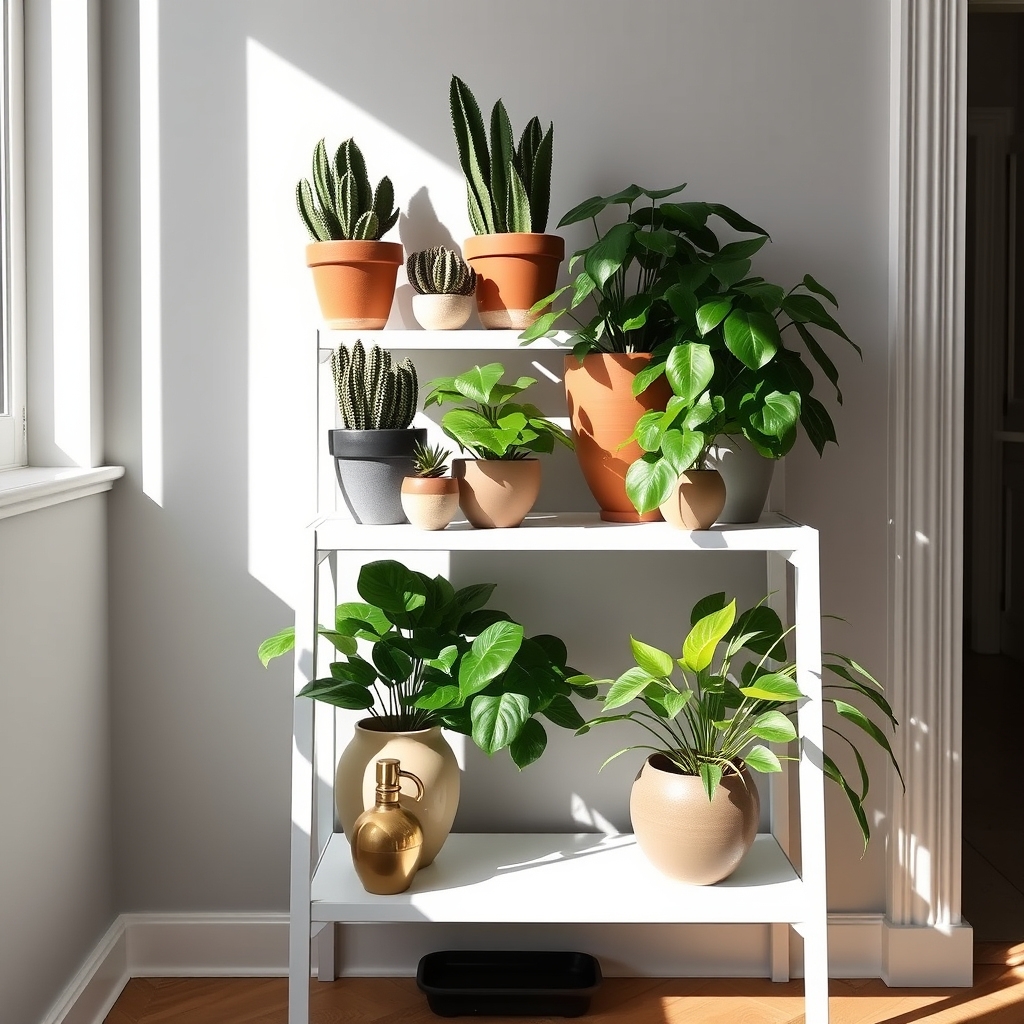
Grouping plants by watering needs involves arranging houseplants with similar water requirements together in clusters or zones. This organizational method creates distinct areas for high-moisture plants (like ferns and peace lilies), moderate-water plants (such as philodendrons and pothos), and drought-tolerant plants (including succulents and cacti).
Plants with comparable watering schedules should be positioned near each other, making maintenance more efficient and reducing the risk of over or under-watering. This arrangement can be achieved using plant stands, shelving units, or designated areas within a room.
The groupings should also consider other environmental factors like humidity and light requirements to ensure optimal growing conditions for all plants.
Visual indicators, such as plant labels or color-coded pots, can help identify different watering groups. This system streamlines plant care routines and helps prevent common watering mistakes that could harm plant health.
Incorporate Plants Into Functional Spaces
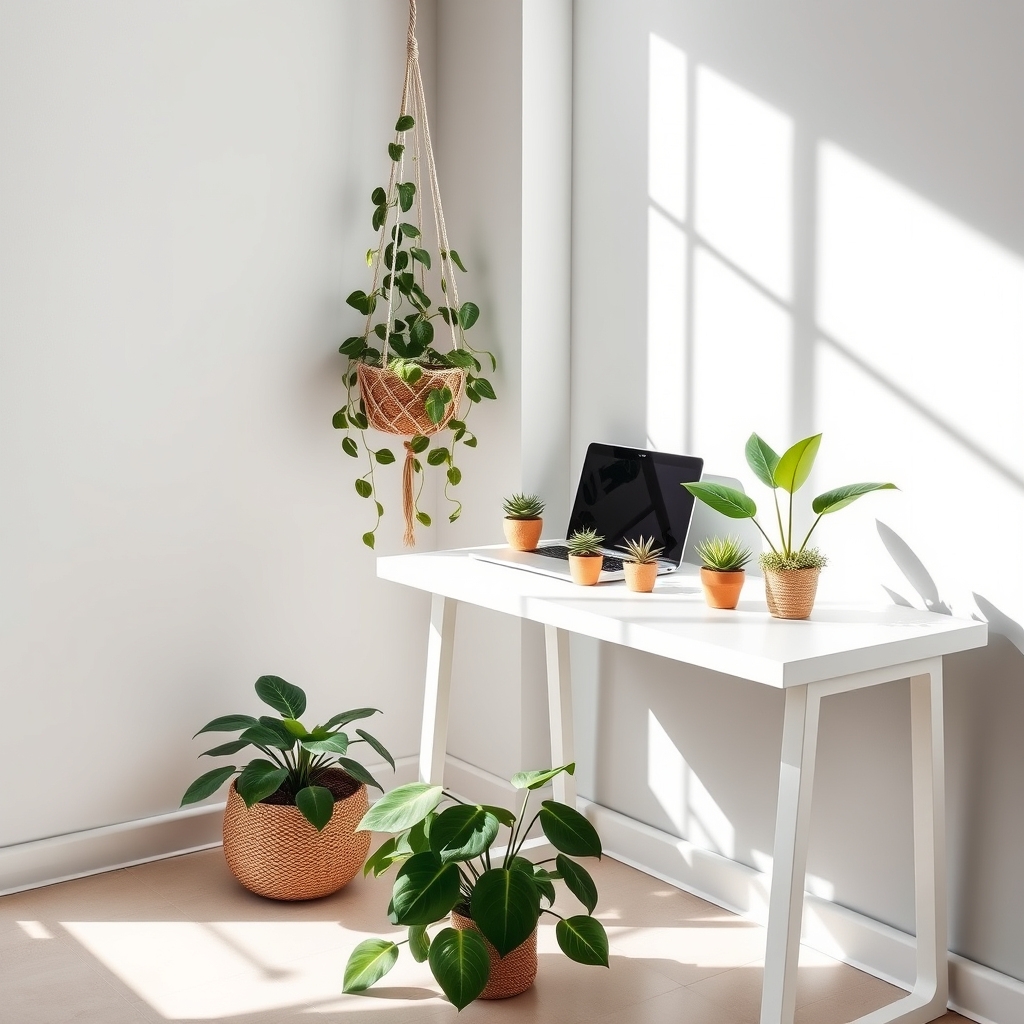
Incorporating plants into functional spaces transforms everyday areas into vibrant, living environments while maximizing available room.
Plants can be strategically placed on desks, kitchen counters, bathroom shelves, and windowsills, serving both decorative and practical purposes.
Hanging planters, wall-mounted containers, and corner plant stands allow greenery to occupy otherwise unused vertical spaces.
Key placement options include:
- Desktop succulents or small peace lilies near computer monitors
- Herbs in kitchen windowsills for cooking access
- Bathroom-friendly ferns or orchids utilizing shower humidity
- Trailing plants on top of cabinets or bookshelves
- Corner plant groupings using tiered stands
- Vertical garden systems on empty wall spaces
This approach merges plant care with daily activities, making the most of limited space while creating natural focal points throughout functional areas of the home.
Balance Plant Sizes and Textures
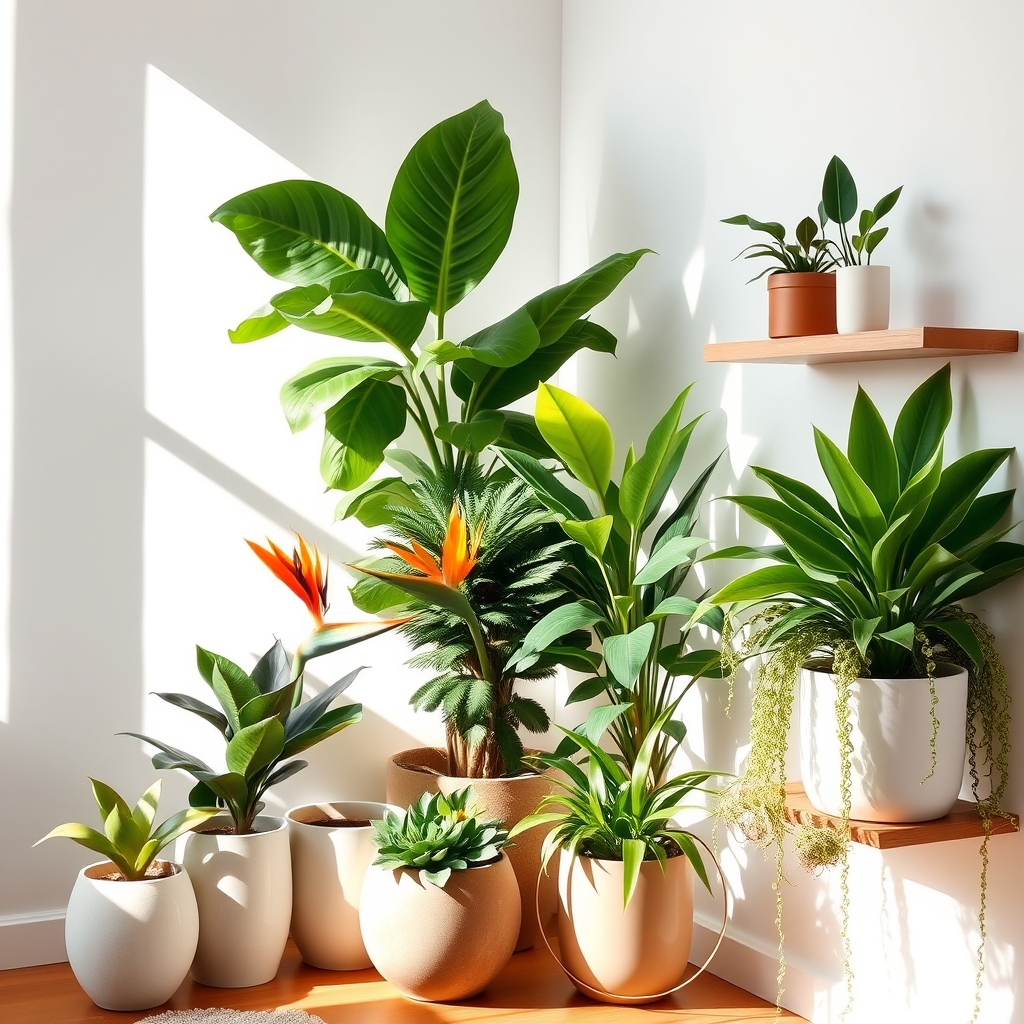
Balancing plant sizes and textures creates visual harmony in indoor spaces by combining plants of varying heights, shapes, and leaf characteristics.
Tall, upright plants like snake plants or fiddle leaf figs serve as focal points, while medium-sized plants fill the middle ground, and trailing varieties like pothos or string of pearls add cascading elements.
Contrasting leaf textures—smooth, fuzzy, rippled, or spiky—create depth and interest.
Plants should be arranged with larger specimens at the back or center, gradually transitioning to smaller ones in front or around the edges, similar to how a landscape designer layers outdoor gardens.
This thoughtful arrangement prevents visual monotony and creates a more natural, dynamic display.
Rotate Seasonal Plant Arrangements
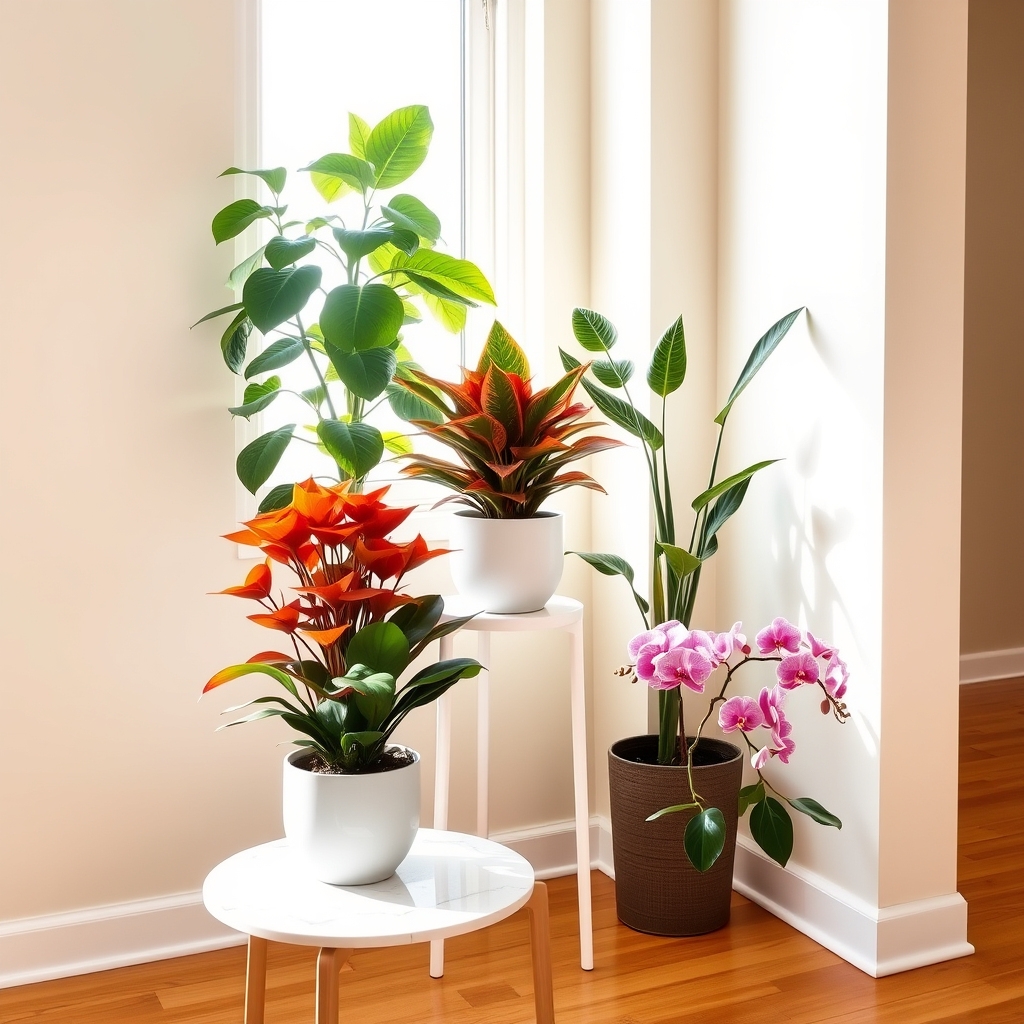
Changing indoor plant displays throughout the year to match each season’s characteristics and light conditions.
During spring and summer, feature blooming plants like orchids and peace lilies in brighter areas.
For fall, incorporate plants with warm-colored foliage such as crotons and Chinese evergreens.
Winter arrangements focus on hardy specimens like snake plants and ZZ plants that tolerate lower light levels.
Key features:
- Refreshes home decor naturally with the changing seasons
- Optimizes plant health by placing them in seasonal light conditions
- Creates visual interest through varying colors, textures, and heights
- Allows rotation of plants between high and low-light areas
- Provides opportunity to showcase seasonal flowering varieties
Design Plant-Friendly Temperature Zones
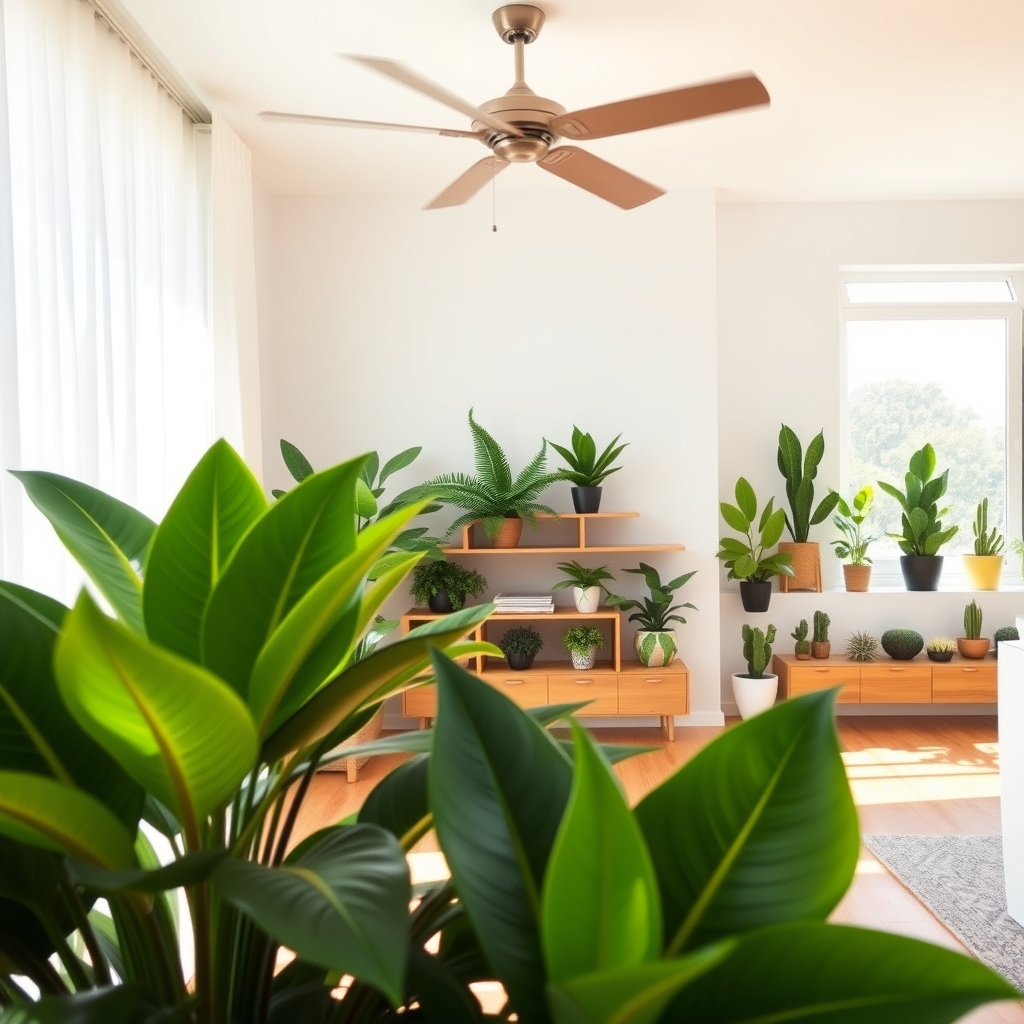
Creating distinct temperature zones within your home allows different plant species to thrive in their optimal conditions. This involves mapping out areas based on natural temperature variations, such as:
- Warm zones (65-80°F): Near heating vents, sunny windows, and kitchen areas
- Cool zones (55-65°F): Near entryways, basement stairs, and north-facing windows
- Moderate zones (60-75°F): Interior rooms away from drafts and heat sources
Key features:
- Natural temperature gradients from floor to ceiling
- Microclimate pockets around windows and doors
- Humidity variations between rooms
- Air circulation patterns affecting temperature distribution
Strategic placement considerations:
- Group plants with similar temperature requirements
- Use room dividers or shelving to create separate climate areas
- Monitor seasonal temperature fluctuations
- Adjust plant locations based on heating/cooling system cycles
Establish Plant Care Stations

Establishing plant care stations involves creating dedicated areas in your home where you keep essential plant care supplies and perform maintenance tasks.
These stations typically feature a waterproof surface, good lighting, and storage for tools, fertilizers, and soil. A well-organized plant care station includes:
- A sturdy table or counter space
- Nearby water source
- Storage containers for soil and amendments
- Dedicated tools (pruners, watering can, spray bottles)
- Plant care schedule or journal
- Plant first-aid supplies
- Drainage tray collection
- Cleaning supplies
The station can be as simple as a utility cart or as elaborate as a built-in potting bench.
Key features include easy-to-clean surfaces and proper organization to streamline plant maintenance routines. Many plant owners set up multiple mini-stations throughout their home to accommodate different plant groups and care needs.
